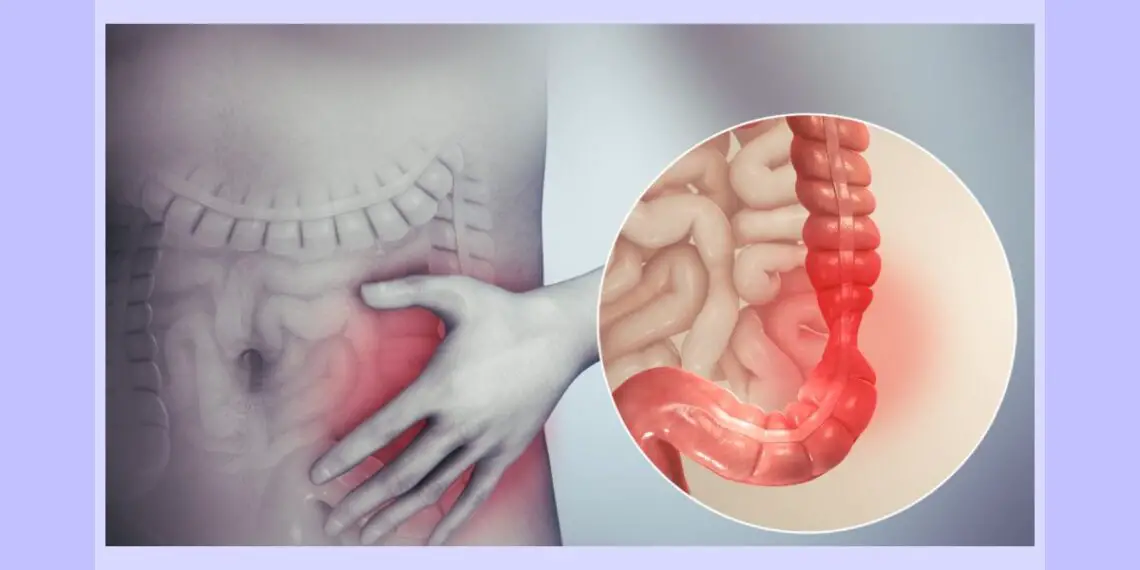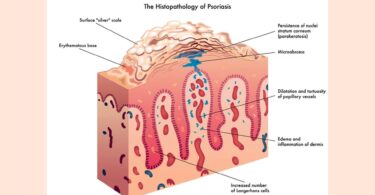The following is a case written by the student intern homeopath who took the case in the supervised MICH Intern Clinic a few years ago (2011).
In each clinic case the attending intern observers and the student intern homeopath enters into dialogue. An experienced supervisor is present, but only intervenes when the process leaves the framework of dialogue, to guide the students back into the process.
The dialogue focuses on the essence of the deepest aspects of the patient, and dialogue continues until there is group consensus that this essence has been reached. It is then that the materia medica is read thoroughly to determine what is the best similimum via the symptomology. Repertorization is used as it was designed: as a memory tickler for the homeopath, to provide hints for possibilities of remedies, and direction for materia medica research.
Even though this is an example of a sensation method based case taken a few years ago, it is still an example of a case that addressed the patient’s concerns in a multi-dimensional way. The case does not touch on the patient’s striving, yet it is still an example of a case that takes into consideration the whole dynamic movement of the patient around a core issue.
The other interesting factor is that the chosen remedy did not come up in any of the rubrics and would not have been selected via a method that solely used repertorization. This shows the efficacy of a Noumedynamic approach to case taking and prescribing, and how lesser known remedies can be missed via rubric based prescribing methods.
homeopath
Roberta Vienneau – MICH Homeopath (case taken while a student intern in mich clinic).
1st Session: January 20th, 2012
patient
Client is a 21-year-old male college student and part-time worker. He was extremely affable, cheerful, and verbally descriptive throughout the session and spoke almost non-stop.
patient’s chief complaint, etiology, symptoms, history
Irritable Bowel Disease
- Presenting complaint was IBD, for which he had been taking anti-diarrheal meds every day for the past 6 years, on the advice of his doctor. Physical symptoms were cramps, diarrhea, food sensitivities (all common symptoms of IBD). Also presenting with symptoms of anxiety and stress.
Other History
- As a toddler aged 2 or 3, he was diagnosed with Wilm’s Tumour (left kidney children’s cancer); the kidney was removed and he underwent radiation treatment.
- At age 11, he had a concussion while playing hockey, and was unconscious for 30-40 seconds; there was no memory loss but he became very sensitive to hearing and light from then on.
- He has had mild depressions over the years.
- There are thyroid gland issues in the immediate family history, as well as issues of being overweight.
Remedy Prescribed
- Scrophularia nodosa 200c
PATIENT’S DYNAMIC
We start off our case synthesis by feeling into the client’s dynamic movement in life.
The client is very relational and chatty. He loved the process of working with a group in case taking, and seemed thrilled of being there with everyone. He is very family oriented and enjoys the security of the relationships within his family. Any situation where he is with people, especially those he loves, are enjoyable for him, even exciting. Any situation where he is in relationship with others, and feeling that experience is thrilling and exciting to him … he just loves to be around people, talking, sharing, working together, etc.
In his family, there is a security in relationship, a security of connection and there is no concern there. With his girlfriend he works hard to have her experience the same feeling of connection.
His IBS is most difficult for him, as it keeps him away from school, work and situations where he gets to be with people and enjoying that experience of connection. It feels like he has no control over the situation, and his life revolves around his illness, which prevents him from living his life.
He is fearful of situations that threaten that, such as illness or accidents that might take away his loved ones.
Pt’s words that describe this dynamic:
- I’m terrified in the car when my father drives; he’s an aggressive driver, he yells at other drivers, no one can hear him but me ‘cause the windows are closed. He’s volatile, explosive (note: like his diarrhea), in the car I think that we’ll have an accident. I grip on to the handles and don’t let go, he (dad) has a lot of road rage, shouting, it’s crippling (note: like his disease). I’m terrified of losing my parents; I have zero control over that too, terrified of losing my girlfriend. They’re the glue that keeps me together.”
- He was asked to elaborate on “they’re the glue that keeps me together”: “Whenever I doubted myself, they helped me keep going, just the fact that they’re there, assurance is there, or I’d fall apart.”
- The pivot point was at puberty. I got a concussion in hockey and was unconscious 30-40 seconds; no memory loss, but became sensitive to hearing and light; when I opened my eyes, my mom was there, so it was o.k.
- When asked to describe his preferred area of work: “I’d like to be a media or hockey spokesperson when I really start to work; it’s my dream job, being a hockey commentator. I love to talk, love hockey, teamwork, cooperative teamwork expression – it’s unified connection … During a hockey game my brain goes nuts with happiness, everyone together, everyone thinking the same thing, diverse aspects but the same thing. It revs my engine. Technology allows us to have accessibility and unified communication and capability. It’s one giant hub of information, of communication.” (spoken very excitedly)
- When giving girlfriend a gift – “I’m not trying to buy her love, I just love to see her expression when she opens a gift, but I wouldn’t give her gifts if she didn’t appreciate them. I go nuts (note: speaking very excitedly again, non-stop). I love to make her happy, it’s fulfilling to me. When she opens a gift … (my) breath stops – silence – roar – ribcage starts shaking – insane – an adrenalin rush – freaked out – flipped out – love to surprise – anticipation – she starts screaming and flailing – it’s a reaction that she really appreciates it – the connection you have … blissful.”
Susceptibility to
In our next stage of the case synthesis, we look at what our patient is most stressed by, or “susceptible to” (either in a positive or a negative way). In other words, what threatens or reinforces the definition of self or conditions of existence. We identified the following areas of susceptibility:
- being away from loved ones (mother when young and in hospital, girlfriend)
- father’s volatile and explosive nature and his driving (fear he will get hurt and be parted from loved ones)
- fear of losing girlfriend and parents
- cooperative teamwork – unified connection.
- lack of control over life
- doing things to make girlfriend feel a part of and connected
Susceptibility
From here we look at: What are the conditions of existence for this individual? What does he feel is necessary in life to exist? What reinforces his sense of self? We see that his primary focus and susceptibility is:
- He will fall apart if he loses the experience/sensation of connection.
Sensation
The patient’s experience within their susceptibility is further filled out with the sensations. These sensations are directly related to the core movement and susceptibility or conditions of existence:
- glue that keeps me together
- the fact they are there is assurance
- teamwork – it’s unified connection … happiness, everyone together, everyone thinking the same thing, diverse aspects but the same thing. Technology allows us to have accessibility and unified communication and capability. It’s one giant hub of information, of communication.
- Connection – expressed by the patient’s use of words such as teamwork, assurance, supportive, unified, the connection you have, special, cooperative, fulfilling, collective, appreciation, everyone thinking the same thing, diverse aspects but the same thing. (Reflection: There is an emotional dimension, as well as a dimension of “equal-ness” in his experience of connection with others.)
- I love to make her happy, it’s fulfilling to me. When she opens a gift – it’s a reaction that she really appreciates it – the connection you have … blissful.
- Terrified of losing my parents, terrified of losing my girlfriend, grip and hold on tightly, the glue that keeps me together.
Remedy Choice
In this case, we have a very filled out description of the sensation, in direct relationship to his conditions of existence and susceptibility. It is important when using the sensation to come to a remedy choice where the sensations are directly related to the susceptibility of the patient. The sensations that directly relate to the experience of our patient in relationship to his susceptibility are those of needing connections and relationship, and feeling insecure whenever that is threatened.
In the Scrophulariaceae family of plants, the sensation is that “bonds and connections are not strong, so they want to hold on very tightly, and when that connection breaks, then fear, fright and delusion start” (Dr. Rajan Sankaran, The Sensation in Homeopathy, p.700).
This family of plants covers the sensations experienced by the patient in his susceptibility and at the core of the case. In direct relationship to the experience of connection or disconnection our patient is challenged when he does not feel in control over his ability to be connected (his illness that makes him feel out of control, and unable to be around others as much as he would like, cancer when he was young, his father’s driving which can lead to accidents). This indicates that the plant falling under the cancer miasm will be the closest similimum, leading us to Scrophularia nodosa.
The following are symptoms of Scrophularia nodosa, as reported by J.H. Clarke, in the Dictionary of Practical Materia Medica:
Abdomen: Pain in right hypochondrium, worse deep inspiration or lying right side. Cutting in liver on pressure. Twisting-pinching pain in umbilicus (left side). Colic just below navel and some griping in the side in afternoon. Stool and anus: several stools daily with tenesmus.
Boericke says that it is primarily a remedy for enlarged glands.
Abdomen symptoms include: pain in liver on pressure; colic below navel; pain in sigmoid flexure and rectum; painful bleeding protruding piles.
Sleep symptoms: great drowsiness, esp. a.m. and before and after meals with weariness.
Eye symptoms: photophobia. (Ref.: Boericke: Pocket Manual of Materia Medica, p.590-591) (Note: There are cancerous thyroid gland issues in the family and this patient has light sensitivity since his concussion playing hockey.)
We did look up the following rubrics, but the remedy was not indicated in any of them.
Mind, fear, control, losing
Mind, fear, accidents of
Mind, loquacity, cheerful, exuberant
Mind, communicative
Abdomen, pain, cramping
In a case such as this where we have such well filled out sensations in direct relationship to the susceptibility we can often come to a lesser known remedy that is not well represented in the repertory. Our remedy choice did not come up under any rubrics that we looked up in the traditional repertories or in Guy Loutan’s Répertoire de thèmes et de matière médicale dynamique. However, through the correct use of the Sensation Method, in direct relationship to susceptibility and through the use of Sankaran’s Schema we were able to come to a very accurate similimum, that we would not have come to through the use of any repertory.
drug differentiation
Before prescribing, we always do a drug differentiation with what might constitute a similar. For example: Kali-sulph covers some important symptoms in this case. The patient is very supportive and caring and gives a lot of love to his girlfriend and his family. However, we do not see the kind of fear in Kali-sulph which we see in the client. Kali-sulph covers the emotional dependence dimension of the case, but not the deeper aspect of the delusion (that he will fall apart without connection).
We also say that Arsenicum album covers the dependence and fear part of the case, The connection of Arsenicum with others has undertones of weakness and suspicion, rather than joy and happiness, as we see in the case.
prescription
He was given Scrophularia nodosa (cancer miasm). The potency selected was 200C, dry dose. The medium range potency was chosen because of the strong emotional level at which this client lives his life, and his rather robust vitality, albeit the long-standing, draining physical pathology of diarrhea.
Follow ups
1st Follow up:
- At the first follow-up a month later, he reported: “The day after I took the remedy, I woke up at 5 a.m. with a burst of energy, was ready to go to school at 5:30, didn’t need a coffee.” He said that one of the most significant changes is that he only had to take Immodium a couple of times since taking the remedy about a month ago, whereas he had been taking Immodium every day for the past 6 years.
- He also reported that he was “more focused, organized, motivated, less anxiety, no more taking Immodium, IBS much better, more energy, optimistic, don’t need as much reassurance at work, feel more self-confident”.
- No need to re-dose at the present time. He was invited to call if he felt the need before the next session.
- Note: He did call for support, and was given a re-dose of Scroph-nod 200C (split dose) about 4 weeks before the next session (late March 2012)
2nd Follow up:
- “I’m more open, not as stressed, more relaxed … an inexplicable attribute now – like you have a bubble, the bubble got big and I can touch everything in the bubble – limitless” (regarding taking Immodium medication every day) “I don’t medicate myself, try not to take it, just let it pass, IBS was 1000x worse before, now I can do things I didn’t think I could do” (example?) “planned a party for girlfriend, then school, then train to her place, then car to Quebec city for party, went all day till 1:00 a.m., different foods, etc., all went ok.”
- When asked what was going on when he contacted me for a re-dose after the first follow-up, he stated: “Something was wrong, like realigning new outlook, like one foot on a trapeze, like a screw was loose — before, my comfort zone was the house; now my comfort zone is all Montreal”.
- No need to re-dose.
3rd Follow up:
- The patient reported that he had broken up with his girlfriend. His experience of that – “I’m still emotionally unstable, I lost someone I care about … Other relationships ended, my dog died, grandad died, no tears – this one, bawling, going nuts for 2-3 days, not in a good place, but I want to be there for her in a friend way, not sitting in a corner crying …”
- When asked: How have things changed from before you took the remedy to now? He answered: “Before my life was chaos, now things are easy, common-sense, I handled the breakup well, with quickness, didn’t emotionally cut everything off, got over it pretty quick, about a week and a half – had nightmares, crying, before I wouldn’t have been this in control of how I feel, methodical, organized, I can think differently, like a rubik’s cube, before I could only see 3 parts, now I can flip the cube and see different ways of looking at it, now can take it and look in different ways … growing maturity, rapid in the span of 6 months, I’m happy, confident, my personality, who I am – before, was more cautious, now it’s release-the-beast, just do it – I’m more enabled, nothing blocking.”
- Patient’s self-reflection: Sense of security and comfort zone is greatly extended, much less anxiety, better adaptation to the stresses of life, more verbalization of emotions other than fear.
- No re-dose needed.
The homeopath is still in communication with the patient who continues to do well four years later.
Melissa Dair – Bed, ND, DHom, MICH Director
Melissa is a MICH Homeopath, as well as being an experienced educator, learning facilitator, and student support coordinator. As a homeopath, Melissa accompanies her clients on an in-depth exploration of their inner world, to uncover meaning, connections, and the emergence of insights. She enjoys working with a variety of clients, and particularly enjoys working with adolescents and young adults. To learn more about Melissa, read her profile in our professional directory.
Kate Hudson – BA, E-Ryt, DHom, MICH Clinical Supervisor
Kate is a MICH Homeopath, and experienced workshop facilitator. She believes that the therapeutic process of inquiry is an important step in both the client’s return to health and in the path to selecting an appropriate homeopathic remedy to facilitate that. She works with clients from all walks of life, and has had particular success with those who suffer from anxiety and depression, or other mental emotional challenges. To learn more about Kate, read her profile in our professional directory.
Roberta Vienneau, BA, MA, Dhom
Roberta is a MICH Homeopath who brings to the homeopathic encounter a profoundly poetic ear that is most sensitive to the language of soul … a space to welcome soul’s essence as consciousness lights and delights the journey of life. To learn more about Roberta, read her profile in our professional directory.
The Montreal Institute of Classical Homeopathy offers a full four year program clinical supervision, accredited training in the homeopathic clinic in Honduras and advanced continuing education for Homeopaths.
© Montreal Institute of Classical Homeopathy 2016 All rights reserved







I am so happy that Homeopathy is advancing so rapidly in these years.
Congratulations to teachers and students (and to all of us who love Homeopathy).